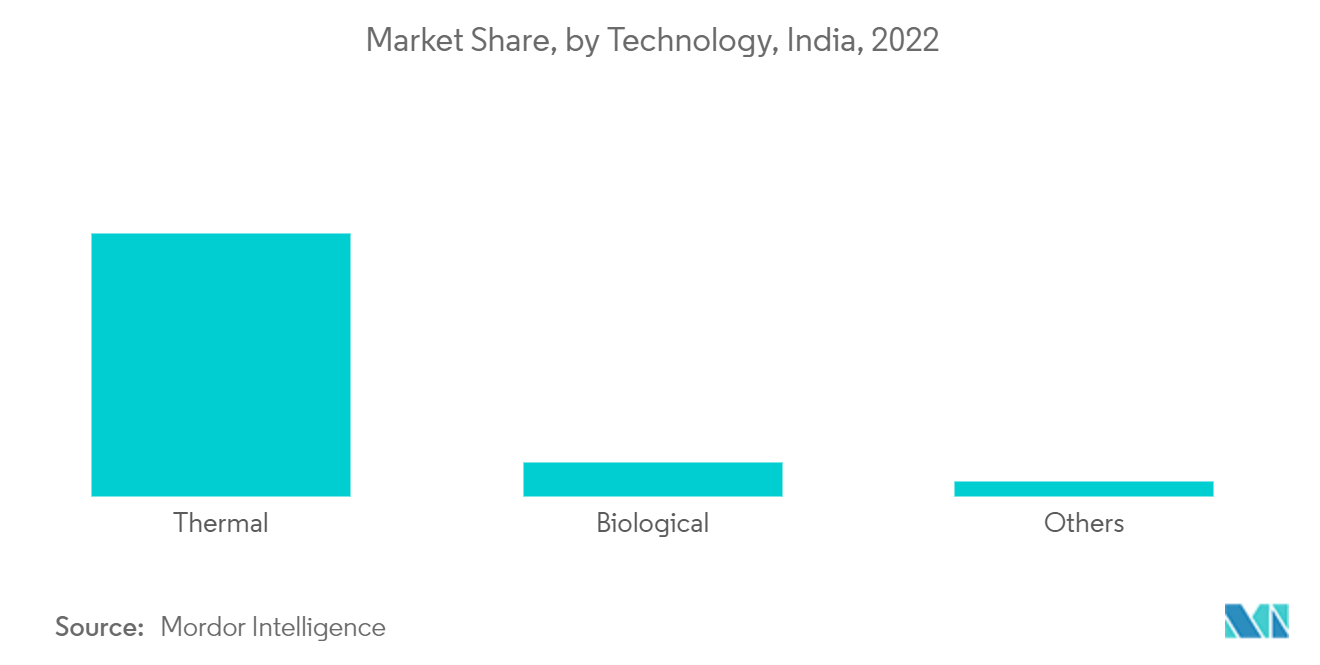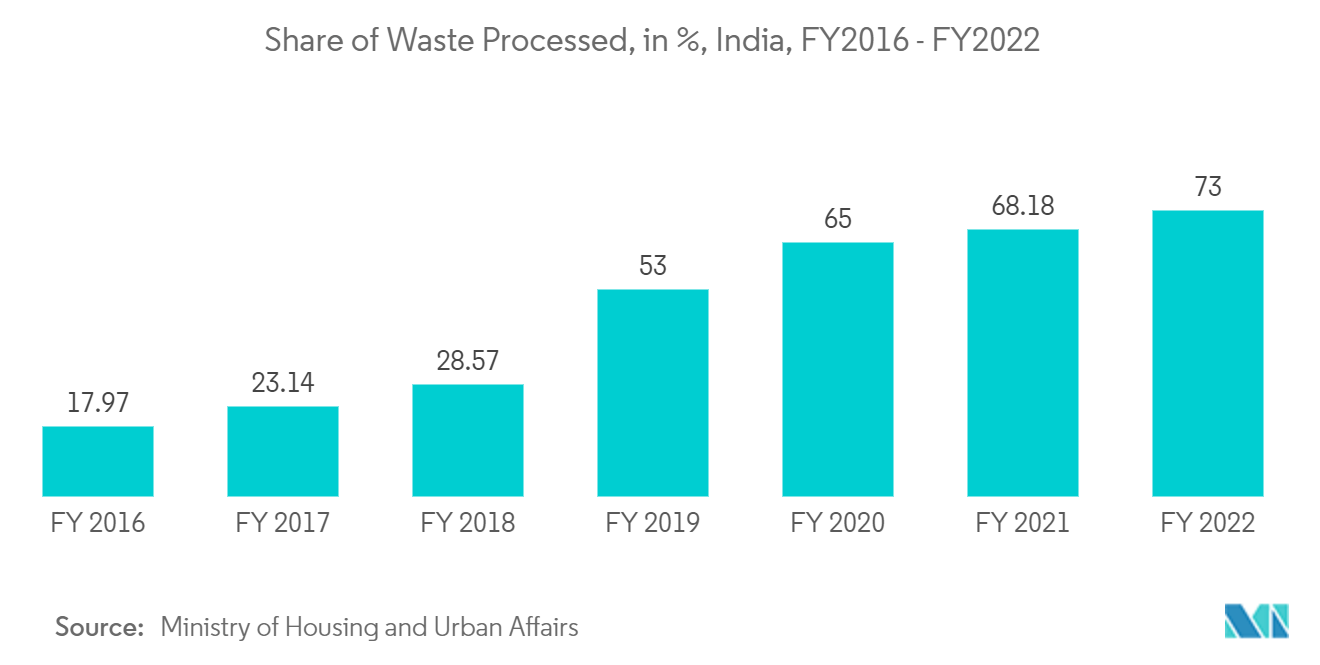Market Trends of India Waste-to-Energy Industry
This section covers the major market trends shaping the India Waste-to-Energy Market according to our research experts:
Thermal Technology to Dominate the Market
Thermal technology of waste-to-energy is expected to dominate the Indian waste-to-energy market during the forecast period, mainly due to the relatively easier process and low costs.
Thermal technology is further subdivided into incineration, pyrolysis, and gasification. Incineration holds the major share among the subdivisions.
Municipal solid waste incineration (MSWI) is the burning of waste in a controlled process within a specific facility that has been built for this purpose. The primary goal of MSWI is to reduce MSW volume and mass and make it chemically inert in a combustion process without the need for additional fuel (autothermic combustion). As a side effect, it also enables the recovery of energy, minerals, and metals from the waste stream.
This technology is a well-established technology. It has been deployed in many projects successfully at the commercial level to treat solid wastes, such as municipal solid waste and industrial solid waste, and generate electricity in India.
Hence, owing to the above points, the thermal technology segment is expected to maintain its major share of the market studied during the forecast period.

Increasing Waste Generation and Efforts to Mitigate Waste Management Crisis is Expected to Drive the Market
India has one of the fastest-growing urban populations worldwide. The rapid increase in the urban population has led to explosive growth in the amount of waste generated by the urban population across the region. Most of this waste is organic in nature (about or more than 50%). India practices compost, incineration, solid waste disposal, and other techniques, including recycling, waste-to-energy, and other waste disposal methods. According to the World Bank, in India, out of the various waste disposal methods, solid waste disposal accounts for approximately 77% of the total.
The rapid urbanization in India has led to the growth of massive megacities and metropolitan areas with high population densities, due to which there is a lack of space for safe and ethical waste disposal. There is also a lack of proper waste management (reduction, reuse, and recycling) solutions, with most of the waste entering landfills. This has led to the creation of large and dense landfills in megacities, which are running out of space quickly, leading to an impending waste management crisis.
In India, recycling is carried out under both formal and informal market mechanisms, which leads to problems such as air and water pollution from the recycling of e-waste and use of lead-acid batteries, water pollution from paper mills using wastepaper, and the improper dumping of waste by recycling companies.
The country's share of waste processed has witnessed significant growth from 17.97% in FY2016 to 73% in FY2022, of which the waste-to-energy is also witnessing a steady rise in its share.
WtE plants can handle waste effectively and reduce its volume significantly while generating energy to supplement the growing energy demand in India. Due to this, India has identified WtE plants as the most practical solution for waste management.
According to the Ministry of Housing and Urban Affairs, as of March 2022, there are approximately 249 waste-to-energy (waste-to-electricity / biogas / bio-methanation) plants that are functional in India, with an input capacity of 0.074 lakh tonnes per day. The oldest waste-to-energy plant in India is the Narela Waste-to-Energy Plant. It processes 2,000 metric tonnes of waste every day to generate 24 MW of energy.
According to the Ministry of Housing and Urban Affairs, as of December 2021, there are approximately 44 waste-to-energy plants under construction, with the capacity to process 0.12 lakh TPD of waste. For instance, in March 2022, the Delhi Municipal Corporation started the construction of a new Waste-to-Energy Plant at Tehkhand. The plant is likely to consume 2,000 tonnes of waste daily and generate approximately 25 MW of energy. The Tehkhand plant is being developed for approximately INR 3.75 billion on 15 acres of land, and the project is expected to begin commercial operations by March 2023.
Hence, due to the aforementioned factors, the market studied is expected to witness significant growth during the forecast period.

